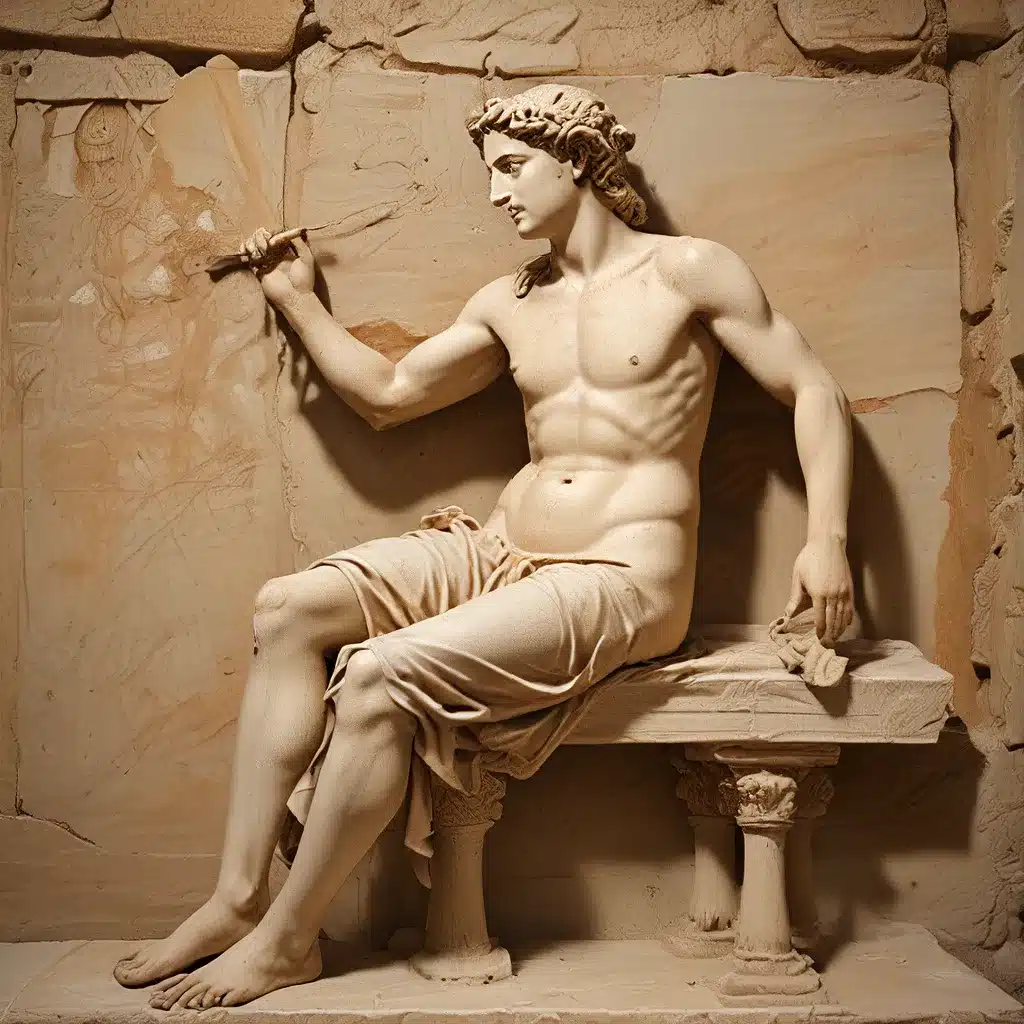
Across the ancient Mediterranean, the ruins of once-vibrant civilizations stand as silent witnesses to the ingenuity, creativity, and cultural sophistication of our ancestors. From the grandeur of the Parthenon in Athens to the intricate mosaics of Pompeii, the artifacts and architectural wonders of the past continue to captivate and inspire scholars, archaeologists, and history enthusiasts alike. In this article, we will delve into the remarkable discoveries that have shed new light on the artistic achievements of these long-lost societies, rewriting our understanding of their rich cultural legacies.
The Pylos Combat Agate: A Masterpiece Unearthed
In 2015, a team of researchers from the University of Cincinnati made a truly remarkable discovery near the ancient city of Pylos, Greece. Excavating the tomb of a Bronze Age warrior, they uncovered a treasure trove of artifacts, including four solid gold rings and an intricately carved sealstone known as the Pylos Combat Agate.
The Pylos Combat Agate, a masterpiece of glyptic art from the Aegean Bronze Age, has captivated scholars and art historians alike. Measuring just over 14 inches in length, this diminutive gemstone depicts a fierce hand-to-hand battle in stunning detail, with the victorious warrior plunging his sword into the exposed neck of his shielded opponent.
“Looking at the image for the first time was a very moving experience,” remarked Shari Stocker, a senior research associate in the University of Cincinnati’s Department of Classics. “It’s brought some people to tears.”
Indeed, the level of craftsmanship and attention to detail exhibited on the Pylos Combat Agate is truly breathtaking, with intricate weaponry, ornamentation, and jewelry captured in miniature. According to Jack Davis, the university’s Carl W. Blegen professor of Greek archaeology, many of the seal’s details are “only a half-millimeter big – incomprehensibly small.”
Challenging Accepted Wisdom
The discovery of the Pylos Combat Agate, along with the four gold signet rings found in the same tomb, has challenged long-held scholarly consensus about the relationship between the Minoan and Mycenaean civilizations.
For decades, it was believed that the Mycenaeans, the dominant culture on the Greek mainland, simply imported or robbed the riches and artistic achievements of the more affluent Minoan civilization on the island of Crete. However, the presence of these Minoan-made artifacts within the tomb of the Mycenaean warrior suggests a much more complex and interconnected cultural exchange between the two societies.
“It seems that the Minoans were producing art of the sort that no one ever imagined they were capable of producing,” said Davis. “It shows that their ability and interest in representational art, particularly movement and human anatomy, is beyond what it was imagined to be.”
This revelation has prompted a reconsideration of the evolution and development of Greek art during the Bronze Age, with the Pylos Combat Agate poised to become a landmark piece in the study of ancient art history.
Unearthing the Secrets of the Past
The Pylos Combat Agate is just one of many remarkable archaeological discoveries that have shed new light on the artistic achievements of ancient civilizations. Across the Mediterranean, researchers have uncovered a wealth of artifacts and architectural wonders that continue to captivate and inspire.
In ancient Pompeii, for example, the excavation of well-preserved frescoes, mosaics, and sculptures has provided a unique window into the daily life and cultural practices of the Roman Empire. The remarkable Boxer Statue, discovered in the city’s ancient baths, stands as a testament to the technical prowess and artistic sensibilities of Pompeian sculptors.
Similarly, the Parthenon Sculptures, housed in the British Museum, have long been regarded as some of the finest examples of ancient Greek art, epitomizing the classical ideals of harmony, balance, and proportion. These magnificent marble carvings, originally part of the Parthenon temple on the Acropolis in Athens, continue to captivate and inspire visitors from around the world.
Rewriting the Narrative of Ancient Civilizations
The groundbreaking discoveries made by archaeologists and art historians have not only expanded our understanding of the past but have also challenged long-held assumptions and narratives about ancient civilizations. As we continue to uncover new artifacts and decipher the stories they tell, the picture of these societies becomes ever more complex and nuanced.
The Pylos Combat Agate, with its stunning artistic quality and unexpected Minoan influences, is a prime example of how these discoveries can rewrite our understanding of the past. Similarly, the ongoing exploration of sites like Pompeii and the continued study of the Parthenon Sculptures have led to a deeper appreciation of the technical mastery, cultural sophistication, and artistic innovation that characterized these ancient worlds.
As we delve deeper into the rich tapestry of the past, the Lost Kingdoms of antiquity continue to reveal their secrets, captivating our imaginations and challenging our preconceptions. Through the lens of these remarkable archaeological discoveries, we are able to forge a more comprehensive and accurate understanding of the ancient world and its enduring legacy.


